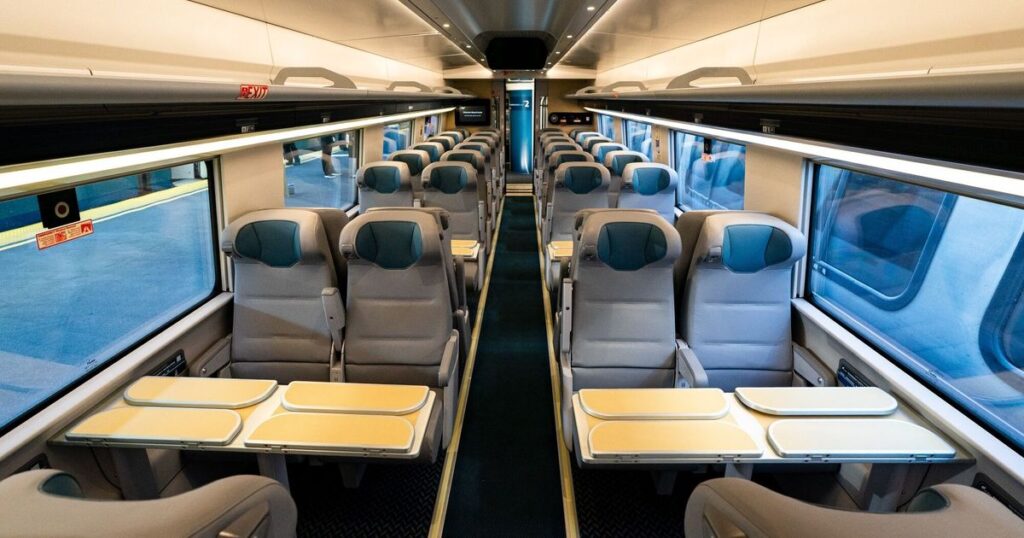(Bloomberg) — Amtrak began operating its new high-speed train fleet on Thursday along the Northeast Corridor linking Washington, New York and Boston, a $2.35 billion project that was delayed for years.
The trains replace the 25-year-old Acelas, and can carry roughly 27% more passengers per trip, according to a statement from the national passenger railroad. The trains, called the NextGen Acelas, will operate at a maximum of 160 miles per hour, 10 miles an hour faster than its predecessor vehicles.
The 28 vehicles are being phased into service through 2027 after years of setbacks. The rollout was originally scheduled for 2021, but was held up by testing complications, infrastructure constraints and other disruptions related to the COVID-19 pandemic.
Since President Donald Trump returned to the White House, the government has shifted its attitude toward extending more federal funding to future projects for the national passenger railroad. His administration has previously advocated to reduce Amtrak’s federal subsidy and emphasized cost-cutting.
“Some people were skeptical about what we were up against in terms of funding when the election happened,” Amtrak President Roger Harris said in an interview. “What the administration said was, ‘Hey, we need you to run a good railroad and we need you to become less dependent on us.’”
Amtrak is looking to break even on operations eventually and divert money to invest in infrastructure by 2028, Harris said.
Built by Alstom SA at the French manufacturer’s facility in Hornell, New York, the project used components from more than 180 suppliers across the US. Alstom has built high-speed trains in Europe and Canada, but had to tweak the structure to adapt to the Northeast Corridor’s old infrastructure.
That’s a challenge that the firm has “very seldom” run into when working overseas, according to Michael Keroullé, president of Alstom’s Americas region.
“We’re working with very old tracks, so we’ve actually married the latest high-speed technology with a tilting system that basically bends the cars in the curves,” he said.
The trains were also originally designed to reach 180 miles per hour, but the old tracks and catenary wires along the corridor limit the speed to 160 miles an hour, he added. However, speed should improve as repairs happen.
The new trains are equipped with free high-speed Wi-Fi, USB ports, power outlets and reading lights at every seat.
More stories like this are available on bloomberg.com
©2025 Bloomberg L.P.

